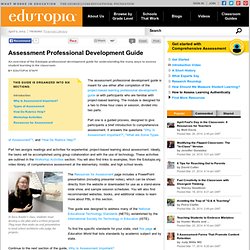

New Page 2. Feeding America. Feeding America: The Historic American Cookbook Project The Project The Feeding America project has created an online collection of some of the most important and influential American cookbooks from the late 18th to early 20th century.

The digital archive includes page images of 76 cookbooks from the MSU Library's collection as well as searchable full-text transcriptions. This site also features a glossary of cookery terms and multidimensional images of antique cooking implements from the collections of the MSU Museum. The Feeding America online collection hopes to highlight an important part of America's cultural heritage for teachers, students, researchers investigating American social history, professional chefs, and lifelong learners of all ages.
Feeding America was made possible with funds from a 2001 IMLS National Leadership Grant. Midge Frazel's Portfolio. Storytelling in the Age of the Internet. CommunityWalk - make your own map, build interactive maps, create a map with photos, videos, more. 21st Century Skills for Teachers: A Graduate Level Class. Hello, learning network.

I’ve been working on the early stages of designing a graduate level class that introduces teachers to the concept of 21st century skills and how to help students develop them. This evening I’ve completed the “design document” and I’ve decided to share it here in hopes of receiving feedback from some of you: 21st Cent Literacy Design Document While I was working on it, I pushed a couple of questions out on twitter and thought I would also aggregate those here so that others can respond later: What’s your favorite information literacy framework besides the Big 6? Do any of you teach “risk taking”? I’d also like to add a few others. What is your favorite framework for 21st century skills and why? And these last two may be the most important – and most difficult: What metrics or evaluation tools do you use to assess 21st century skills? Old Man River Project: GPS and Place-based Learning. The National Geodetic Survey was formed by Thomas Jefferson in 1807 to survey the US coastline.

Geodesy – a science that involves measuring changes in the location of points on the Earth’s surface, Earth size and shape. Uses fixed locations (benchmarks), stable structures (monuments), multiple points (datum), along with triangulation, trigonometry, & GPS. References include latitude (equator), longitude (Greenwich, England), and elevation (sea level). Elements include control, space, and user. Benchmarks are markers placed by surveyor from the US government to identify specific locations. The ePortfolio Hijacked. The ePortfolio Hijacked By Trent Batson12/12/07 The idea of the electronic portfolio in higher education in the US has transmuted from a focus on learning to a focus on accountability.

In the latter part of the last millennium, portfolio advocates talked of students reflecting on their own work and thereby developing critical thinking skills. Portfolios showcased student work, making them proud of their achievement. They helped students believe that they owned their own academic work. So, when portfolios became digital in the mid-1990s, these advocates saw the sun rising on a new day of learning engagement. There is nothing wrong with accountability as a necessary part of higher education. One Way to Do It. Educational Technology and Life. Tapped In Home. ePortfolios for Learning. Assessment Professional Development Guide. An overview of the Edutopia professional development guide for understanding the many ways to assess student learning in the classroom.

The assessment professional development guide is meant for use either after completion of the project-based learning professional development guide or with participants who are familiar with project-based learning. The module is designed for a two to three hour class or session, divided into two parts. Part one is a guided process, designed to give participants a brief introduction to comprehensive assessment. It answers the questions "Why Is Assessment Important? ", "What are Some Types of Assessment"? Part two assigns readings and activities for experiential, project-based learning about assessment. In Eeva Reeder's class, students must develop a site plan and a written proposal. This guide was designed to address many of the National Educational Technology Standards (NETS), established by the International Society for Technology in Education (ISTE).
Rubrics. Rubrics Descriptors Why Include Levels of Performance?

Analytic Versus Holistic Rubrics How Many Levels of Performance Should I Include in my Rubric? Rubric: A scoring scale used to assess student performance along a task-specific set of criteria Authentic assessments typically are criterion-referenced measures. That is, a student's aptitude on a task is determined by matching the student's performance against a set of criteria to determine the degree to which the student's performance meets the criteria for the task.
Research Rubric As in the above example, a rubric is comprised of two components: criteria and levels of performance. For each criterion, the evaluator applying the rubric can determine to what degree the student has met the criterion, i.e., the level of performance. Finally, the rubric above contains a mechanism for assigning a score to each project.
The above rubric includes another common, but not a necessary, component of rubrics -- descriptors. Thus, start small. Search Results: Digital storytelling rubric. Designing scoring rubrics for your classroom. Mertler, Craig A. Next Vista for Learning.